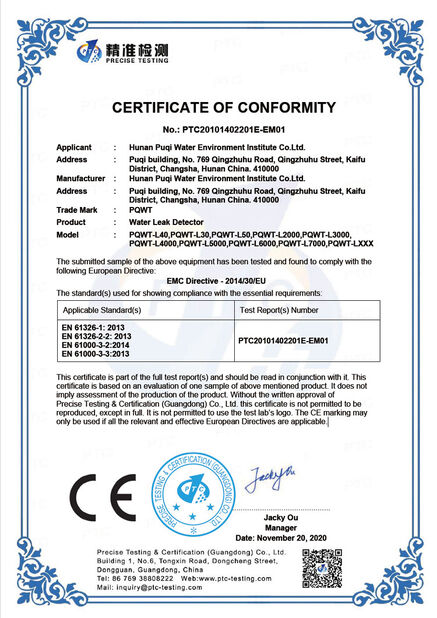In family life, water pipe leakage is a common and troublesome problem. Especially when the water pipe is buried inside the wall, floor or ceiling, it becomes more complicated to find and repair the leak. This article will introduce several effective methods to find the leak of the buried water pipe in detail, and provide some practical suggestions to help you solve the leakage problem smoothly.
Preliminary detection and confirmation
Before looking for the leak, you must first confirm that the water pipe is indeed leaking. The following are some common signs of water leakage:
1. Abnormal increase in water bills: If the water bill suddenly increases significantly, and the daily water consumption has not changed significantly, it is likely that the water pipe is leaking.
2. Drop in water pressure: When using water, the water pressure drops significantly, which is also a sign of a leak.
3. Wet ground or water accumulation: Unexplained moisture or water accumulation on the ground, especially in dry weather, may also indicate a water pipe leak.
4. Odor: Leakage may cause the soil to become wet, which in turn produces odor.
5. Wall or foundation problems: If the wall is found to be moldy or bubbling, or the foundation is found to have subsidence, the possibility of a water pipe leak should also be considered.
Prepare tools and turn off the water source
1. Tool preparation: flashlight, hearing equipment (such as a leak detection stick or leak detection instrument), leak detector, shovel, water pipe detector, etc.
2. Turn off the water source: turn off the main water valve to prevent the water flow from spreading further during the detection process.
3. Safety measures: wear protective gloves and goggles to avoid injury during the excavation process.
Specific methods for finding leaks
1. Observe the water meter: after turning off all water-using appliances, check whether the water meter is still turning. If the water meter is still turning, it means that there is indeed a leak in the system.
2. Listening for leaks:
①. Use a concealed water pipe leak detector to listen along the underground water pipe. If you hear obvious running water or hissing sounds, you can preliminarily determine the approximate area of the leak.
②. Pay special attention to areas with frequent water use such as kitchens and bathrooms, as well as corners, water pipe joints and fixed equipment.
③. Observe the ground: observe whether there is obvious moisture, water accumulation or loose soil on the ground along the water pipe path. These are clues to the leak.
3.Pressure test:
①. Use a pressure test device to pressurize the water pipe, and then observe the reading of the pressure gauge. If the pressure drops rapidly, it means that there is a leak in the pipeline.
②. By constantly moving the equipment, the scope of the leak can be further narrowed.
4.Thermal imaging detection:
①. Use a thermal imager to detect the temperature difference around the underground pipeline. The soil near the leak is usually wetter than other places, and the temperature will be different.
②. This method can help you find the leak more accurately.
5.Dye test: Pour food-grade dye into the water pipe, and then observe whether the dye seeps out from the ground. This method is suitable for situations where the leak is relatively shallow.
Repair the leak
1. Digging and positioning: According to the location of the leak found, carefully dig the surrounding soil or wall until the leaking part is exposed.
2. Repair the leak:
①. For small cracks, waterproof tape or pipe repair clamps can be used for temporary repair.
②. For larger cracks or damage, the damaged pipe section needs to be replaced. Cut off the water source, cut off the damaged section with pipe shears or saws, and then connect it with the new pipe using a joint to ensure that the connection is firm and there is no leakage.
③. Test the repair effect: After the repair, re-pressurize the water pipe and check if there is any leakage. If there is no leakage, it means that the repair is successful.
Subsequent treatment and prevention
1. Re-fill: After confirming that there is no leakage, re-fill the excavated soil. Try to compact the soil to avoid forming voids.
2. Clean up the site: Clean up the tools and garbage at the construction site to ensure a clean environment.
3. Regular inspection: In order to avoid the problem of water pipe leakage again, it is recommended to regularly inspect and maintain the pipeline.
4. Preventive measures:
①. Use high-quality pipes: Choose durable and corrosion-resistant pipes to effectively extend the service life of the pipes.
②. Professional installation: Ensure the professionalism of the water pipe installation to avoid leakage caused by improper installation.
③. Regular inspection: Regularly inspect the pipeline system to detect and deal with potential problems in a timely manner.
④. Reasonable design: When designing the pipeline layout, try to avoid long straight pipes and too many joints to reduce the possibility of leakage.
Through the above steps, you can effectively find and repair the leaking points of the buried water pipes. Although the process may be a bit cumbersome, as long as you are careful and patient, I believe you will be able to solve the problem smoothly and keep your home dry and safe.

 Your message must be between 20-3,000 characters!
Your message must be between 20-3,000 characters! Please check your E-mail!
Please check your E-mail!  Your message must be between 20-3,000 characters!
Your message must be between 20-3,000 characters! Please check your E-mail!
Please check your E-mail! 

